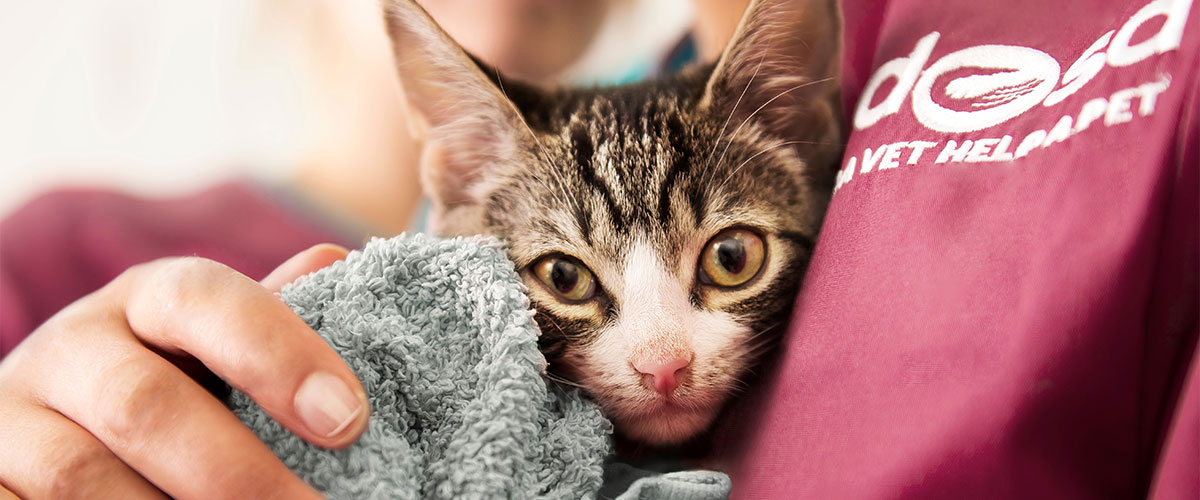Having a cat in your life is lots of fun, but there are lots of things to think about before bringing them home with you. Take time to learn about everything you need to keep them happy and healthy throughout their life and make sure you can meet their 5 Welfare Needs.
It’s really important to consider how much caring for your cat will cost before deciding to share your life with them. If you are seriously thinking of getting a cat, sit down and work out a budget for them, considering your lifestyle and all the things your new cat may need.
How much does caring for a cat really cost?
Cats can be an amazing part of a family, but they do require care and commitment, which comes at a cost. We have estimated that it will cost an owner at least £11,400- £13,600 to care for their cat over their whole lifetime.
This is an estimated minimum cost - it doesn’t take into account any further costs outside of the basics required to meet their welfare needs. If you decide or need to spend more on your cat’s care or if they live longer than average, they could cost considerably more.
If your cat becomes unwell or has an accident and needs veterinary care, your costs will be higher. Of course, our cats are worth every penny, but you need to make sure you can afford any medical treatment they need. We recommend that all owners take out pet insurance, which is included in our estimate. Sadly, purebred cats are often at higher risk of certain health problems, which could add to your costs.
Getting started: the initial cost of getting a cat
There are lots of things to think about when you first get a cat to make sure they are happy and healthy. As a minimum, this includes:
- Bed
- Food and water bowl
- Microchip
- Initial course of vaccinations
- Neutering
- Scratching post/cat tower
- Two litter trays, litter and scoops
- Toys
- Brush or comb for grooming
- Cat carrier
We estimate that these ‘set-up’ costs total approximately £366. However, this doesn’t include the cost of buying your cat.
We recommend adopting from a reputable rehoming centre – most will neuter, vaccinate and microchip your cat. You can read our vets’ advice on the best place to get your cat.
If you have more than one cat, they will need at least one each of everything listed here, plus one extra, to ensure they never have to share resources.
Ongoing care: how much a cat costs per month
Once you bring your cat home, you’ll need to spend money on them regularly. These costs include:
- Yearly health checks and booster vaccinations
- Flea and worming treatments
- Insurance
- Complete cat food
- Toys
- Cat litter
Based on the above, we estimate that the minimum monthly cost of owning a cat is £79.

Remember, many of the things bought when you first get your cat may also need to be replaced over their lifetime as they wear out, which will increase these costs.
How we worked out the costs
The costs above are the basic minimum required to meet a cat’s 5 Welfare Needs and you could spend much more throughout a cat’s lifetime, especially if they have expensive tastes or need ongoing vet care that isn’t covered by your pet insurance.
Here’s how we worked out the estimated minimum lifetime cost of caring for a cat:
- First, we used the items listed in the bullet points under the getting started section above to work out the estimated set-up costs of a cat.
- For ongoing costs, we worked out the monthly ongoing cost of caring for a cat using the items listed above.
- We multiplied the monthly cost by 12 to get an annual cost.
- We multiplied the annual cost by the average life expectancy for cats (11.7-14 years)*.
- We added this number to the estimated cost of first getting started to find the full cost of caring for a cat over their lifetime.
We calculated these costs in 2024, using rates available for products online.
You can use this sum, together with your own research and our cat breed information to calculate how much you could spend through your cat’s lifetime.
What’s not included
These numbers are all estimates and don’t include any vet fees (should your cat become ill or injured) or the costs of buying or adopting a cat. Extras – such as cattery boarding or a cat sitter if you go away, or costs for a special diet (e.g. in case of a medical condition such as allergies) - are also not included.
* 11.7 to 14 years taken from the following references:
- Teng KT, Brodbelt DC, Church DB, O’Neill DG. Life tables of annual life expectancy and risk factors for mortality in cats in the UK. Journal of Feline Medicine and Surgery. 2024;26(5). doi:1177/1098612X241234556
- O’Neill et al (2015) Longevity and mortality of cats attending primary care veterinary practices in England. Journal of Feline Medicine and Surgery, Vol. 17(2) 125–133
- Montoya, M., Morrison, J. A., Arrignon, F., Spofford, N., Charles, H., Hours, M. A., & Biourge, V. (2023). Life expectancy tables for dogs and cats derived from clinical data. Frontiers in Veterinary Science, 10, 1082102.)

